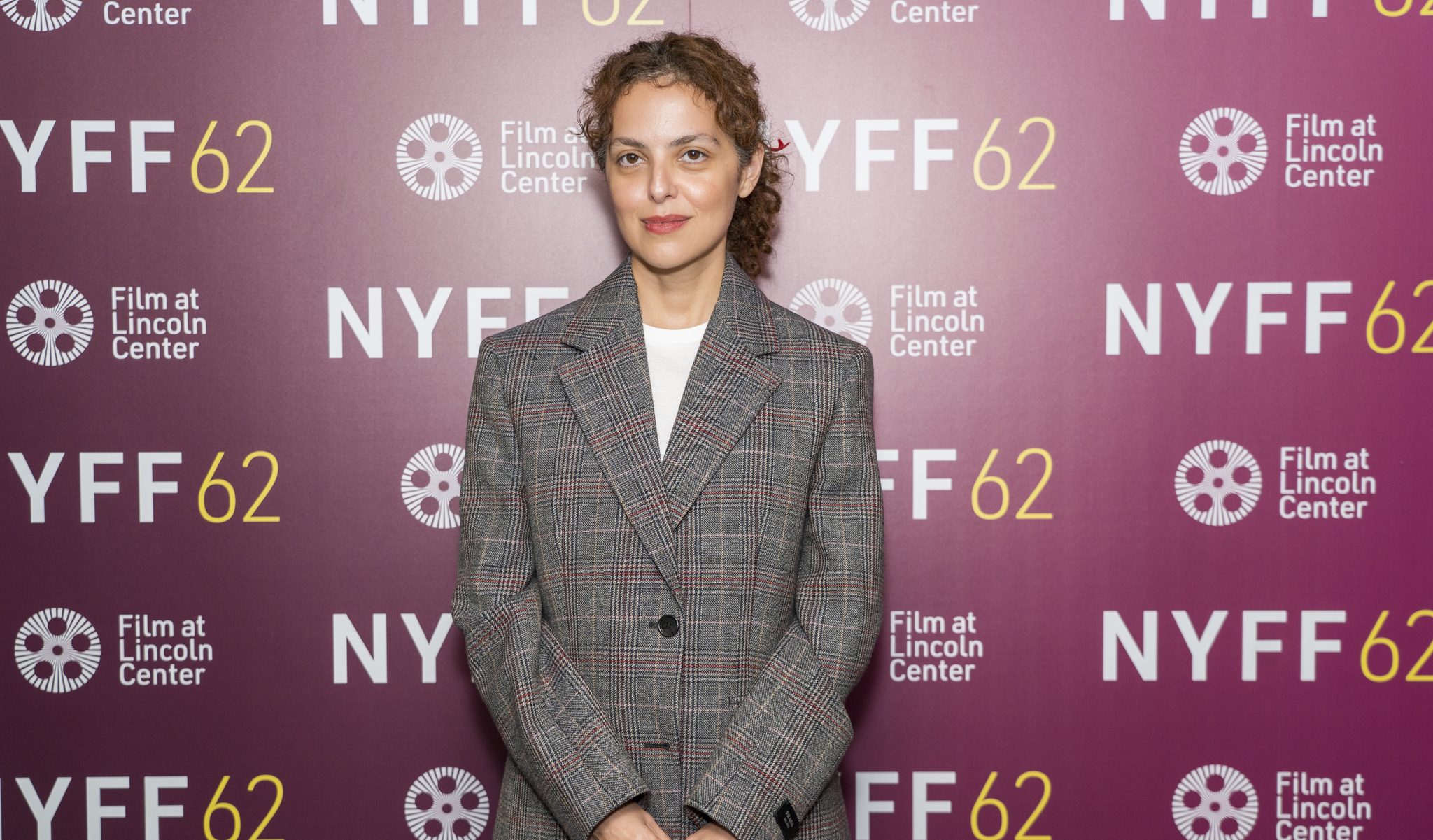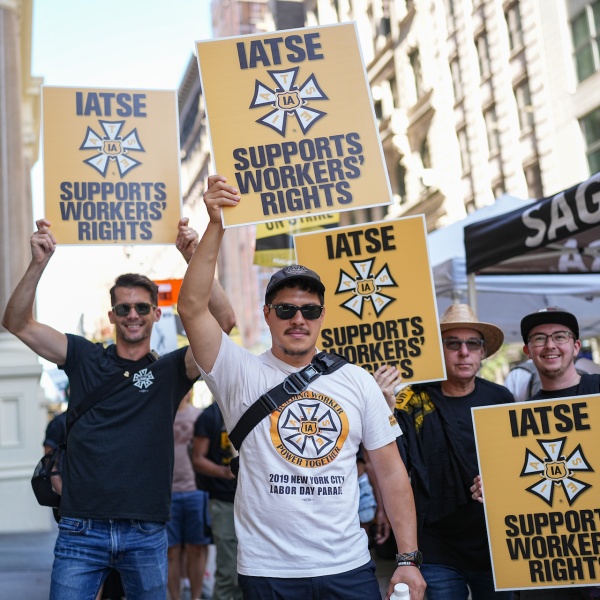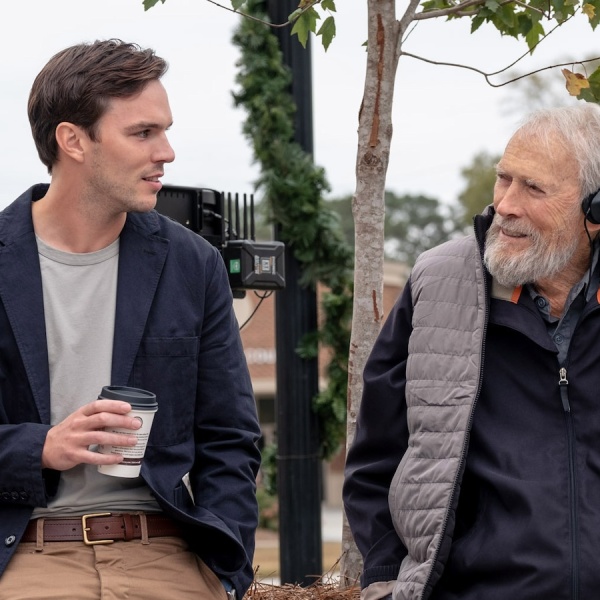It wasn’t just live births that filmmaker Dea Kulumbegashvili witnessed while researching her new abortion odyssey “April” in a remote Georgia hospital. She saw something else that still haunts her — and the project.
The filmmaker was embedded in the hospital during pre-production when a woman was brought in on the edge of death. The man accompanying the victim claimed a gas leak had poisoned her, but as Kulumbegashvili and everyone around her soon learned, this man had actually murdered the woman. And Kulumbegashvili knew the victim. And the killer. And the chief of police who arrested and then attacked him.
“It took me a long time to decide how much of it could be part of the film,” the Georgian filmmaker, who now lives in Berlin but returned to her childhood village of Lagodekhi to make her extraordinary Venice prize winner, told IndieWire during the New York Film Festival. Prior to a shoot and post-production process that lasted a year in Babelsberg, Germany, Kulumbegashvili spent months immersed in the local hospital. There, she observed the work of doctors in a maternity clinic while helping her actress, Ia Sukhitashvili, learn medical procedures to play a melancholic obstetrician in freefall after a baby dies on the operating table. It’s then suspected she’s providing illegal abortions for underage women in the village.
“I did witness this woman being murdered. I was not in the house, obviously, but I was in the hospital when she was brought in,” she said. “That was a terrifying moment for me because I was researching when I was there. Women were giving birth, and I was very involved in the process, and suddenly everyone started running around —” Kulumbegashvili, who gave birth to her own child just before the “April” edit began, stopped, becoming emotional during our interview.
“I knew her,” she said of the victim, “and very sadly also I knew the person who murdered her since my childhood. That’s a very difficult thing … This woman was brought in who was sexually abused by a member of her family. When she started to really refuse, he murdered her and pretended it was a gas leak. She was brought into the hospital still alive, but it was already impossible to save her. The most horrible part of all of this was the chief of police at that moment was also my former high school classmate. We all knew each other. Everybody involved. It was horrible.”

Kulumbegashvili, to take a breather after the events, went to her sister, who still lives in Lagodekhi, still believing the woman “really died because of the gas leak … My sister said, ‘Oh, my god, she was just murdered. What do you mean?’ It was so obvious [for her] because she expects such things to happen [in Georgia]. For me, because I’m already somebody who comes from outside, I don’t live there, I [told my sister], ‘Don’t be so dramatic. Why do you think so badly?’ And then that night, I knew. Everybody was really shattered. Many things have changed. Even the chief of police was replaced after this story. He got so furious that he was trying to physically beat up [the murderer] because it was very personal for everybody.”
The story does end up in the fabric of “April,” where one of the helpless and lost young women for whom Nina (Sukhitashvili) provides an abortion is revealed to be pregnant from sexual abuse inside her own home. While Kulumbegashvili already had that story beat in place, it changed because of the real-life events that traumatized her: By the end of the film, the young woman character, who is mute, is murdered. “I was never able to bring myself to the point to make it more than just people [saying] that this happened. I knew that I couldn’t just leave it out, either. When life tells you that cinema cannot be dramatic enough, life is still always more.”
Kulumbegashvili declined to elaborate further on the details of the victim’s death and how she was killed, but she added that the woman left behind three underage children.
Like another New York Film Festival director this year, Mike Leigh, whose films start without a script and evolve in real-time with the actors and their surroundings, Columbia MFA graduate Kulumbegashvili began “April” with an idea that gestated over the years into its final form. She was moved and troubled by tales of the desperation of underage women in her home country forced into illegal marriages and into seeking abortions (it’s legal up to 12 weeks in Georgia, but clinics can and often do refuse care, even in situations of rape).
Kulumbegashvili’s research led to a casting process that reunited her with Sukhitashvili — who starred in Kulumbegashvili’s debut, the 2020 Toronto FIPRESCI prize winner “Beginning,” a religious drama also set in Georgia and revolving around sexual assault. Eventually, the filmmaker and actress installed themselves in the village’s maternity ward but only after Kulumbegashvili had already spent a year in the clinic with her cinematographer Arseni Khachaturan, shadowing doctors and talking to pregnant women and observing births.
And in what may be a harrowing moment for many of the men in the film’s audience, an actual live birth — filmed by Kulumbegashvili and her crew and featuring the lead actress assisting the delivery — is among the opening scenes of “April.” It was only possible because of the trust the director engendered among the women patients.
But it wasn’t her plan all along to incorporate an actual birth into “April.” “I was talking to women who were registered to give birth, and at some point, they said, ‘Maybe you should film.’ It started as a joke in a way, and then I understood that I should, that I need to do this … Whoever expressed readiness to allow us to film, I asked my producers, with all the women we have a contract with to pay all of them some amount. The first one who would give birth, who we would film, no matter how it would come out, this is what would be in the film,” she said. “That would be the only possible way for me, not to really intervene as a director in that moment.”

For the birth scene, Kulumbegashvili said Sukhitashvili’s participation extended beyond merely performing. “Usually when you give birth, and your partner attends, they’re allowed to cut the umbilical cord,” she said. “This is what they allowed her to do. There were little things she was allowed to do while filming, but obviously around the camera there’s so much medical personnel. But it was very challenging for her. She was talking to me and said, ‘This is not just acting anymore.’ I asked her to stop thinking about it because there is no other take. It’s impossible. But no matter what happened, I knew it would be in the film.”
The director also worked with her team to ensure the women in the maternity clinic who contributed to the film were compensated for their time. “I wanted everybody to get some payment at least because for women there, also, it’s really important if they agree to allow you to film such an intimate moment, that despite them wanting to share it, they still expect to be paid. Producers were really supportive. We really calculated how much money is necessary for the first year of [child care],” she said.
In a film that throughout applies a vérité approach to chronicling medical procedures, Kulumbegashvili also shows an actual epidural in her film. That’s the process where pain medication is injected into the spine of a woman in labor to numb the lower half of her body — one that “fascinated” the director the first time she saw it from start to finish.
“When I first saw an epidural, I understood that women’s bodies look like a sculpture. After that, I went to Paris to the museum of primitive arts, and there are so many sculptures of pregnant women or women giving birth or with children, and I understood that it’s such a universal image somehow,” she said. “It really looked like something going back into history when I looked at the actual women having epidural, so I decided that this needed to be part of the film. Not just giving birth, but the process of preparation for it, because there is something very sacred for me about this entire procedure.”
From “Beginning” to “April,” Kulumbegashvili has drawn comparisons to Michael Haneke and his clinical approach to disturbing material, or the way an assault or act of brutal violence can sneak its way unexpectedly into a statically shot film. It’s a lazy reference point for the same, Western critics grafting a familiar mode onto new work to dissolve the barrier to less accessible entry. I asked Kulumbegashvili whether she minds being compared to a Western-European male filmmaker in reviews.
“Nothing really bothers me,” she said. “I am really grateful for being here. I was talking to my partner today. I grew up in the place where I make films. I grew up during civil war. We never had electricity and I had never seen films. I was very much just a reader. I read everything possible. I did not even know what film theaters looked like. I had never seen film theaters until I was 17. I don’t care who they compare me to because, first of all, I love Haneke. I don’t see a connection. Does it matter? I think that one day I will be recognized as a director of my own, maybe not. I don’t know if that’s even important. For me, it’s important to go on and be making my films.”
Beyond the realistic approach to otherwise elliptical storytelling methods, “April” has another strange offering: a faceless, slouching creature that stalks the edges of the film, and one meant as an id-like extension, perhaps, of the protagonist’s primal fears. The tall clay-like skin creature looks like a candle melting in human form, without eyes, and with malformed hands that resemble a fetus’ in a sonogram. Straight from a surrealistic horror movie, the image doesn’t comfortably explain itself to the audience, and that doesn’t concern the filmmaker.
“I didn’t want the creature to have eyes or a mouth or be able to communicate in any way. For me, it was this unbearable feeling of desperation, which really was carried by the main character. The creature, for me, was some sort of way out for her, but then the creature itself is also stuck in between worlds. I trusted my instinct in creature scenes in a way because there was so much conversation with producers because they really wanted to know more exact answers. I thought it was just not necessary,” she said. “I really want as a director to get to the moment in cinema when my film doesn’t need to be understood anymore.”
Next, she will partner with Emma Stone and Dave McCary’s Fruit Tree Productions on her upcoming, so-far secret project. “I’m very much looking forward to this new film now because it’s at totally new challenge for me, and I’m very excited,” the filmmaker said. “I don’t like to say what it’s about but I’m really happy that now it’s a suddenly, totally new development for me.”
Metrograph Pictures has U.S. rights to “April” and will open the film in 2025.





